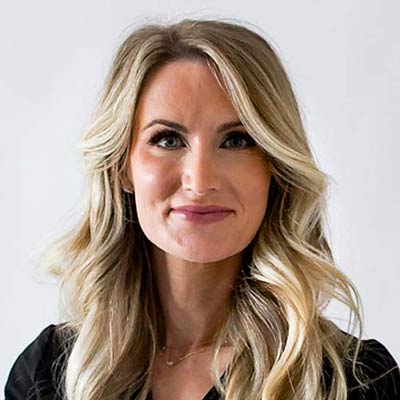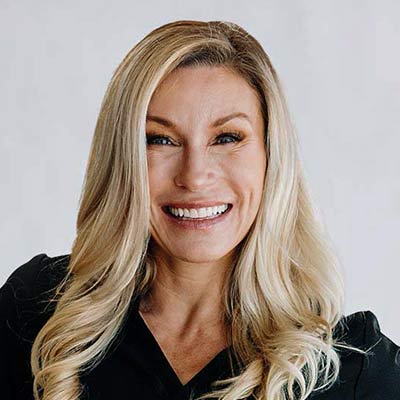We know that pores can be a source of frustration for many. Whether you’re troubled by their size, appearance, or both, this guide is here to provide clarity and solutions. We’re not just about surface-level care; we delve deep into the science of pores to bring you effective, sustainable methods for improving your skin’s texture and appearance.
Many of us have stood in front of the mirror, scrutinizing our pores and wondering if there’s a way to make them less visible. The good news is that while you can’t change the pores you were born with, you can significantly impact their appearance. This guide will explore everything from the basics of pore function to advanced skincare techniques, focusing on practical, proven strategies to enhance your skin’s health and appearance. And yes, we will take a close look at microneedling – a revolutionary treatment that has shown remarkable success in reducing the appearance of pores.
Our journey will begin with a deep dive into the science of pores – what they are, how they function, and why they appear the way they do on your skin. We’ll bust common myths and provide you with the knowledge needed to understand your skin better. From daily skincare routines to professional treatments like microneedling, you’ll discover a world of options for managing pore size and achieving the smooth, radiant skin you’ve always desired.
So, whether you’re in Lakewood Ranch, Bradenton, Sarasota, or anywhere else and are seeking effective pore minimization methods, this guide is for you. Let’s embark on this journey towards flawless skin together, understanding that while pores are a natural part of our skin, managing them effectively can lead to a significant improvement in our skin’s overall appearance.
The Science Behind Pores
Pores: they’re as much a part of our skin as the cells themselves, yet often misunderstood. To effectively care for and minimize pores, it’s crucial to first understand what they are and how they function. Pores are small openings on the skin’s surface that play a vital role in its health, primarily through acting as gateways for sebum (oil) and sweat. This section will guide you through the anatomy of pores, factors influencing their size, and common misconceptions about them.
What Are Pores?
Pores are the tiny openings on the surface of our skin. Each pore is a gateway to a follicle, housing a hair and a sebaceous gland. This gland is responsible for producing sebum, the skin’s natural oil, which helps keep our skin hydrated and protected. Contrary to popular belief, pores are not just ‘holes’ in the skin but complex structures vital for maintaining skin health.
Factors Affecting Pore Size
Several factors can influence pore size, including genetics, skin type, age, and environmental factors. Genetics play a primary role; if your parents have larger pores, you’re more likely to have them as well. Additionally, as we age, our skin loses elasticity, making pores appear larger. Environmental factors like sun damage and improper skincare can also contribute to pore visibility.
Debunking Pore Myths
There are numerous myths surrounding pores. One of the most common is the belief that pores can open and close. In reality, pores do not have muscles to allow them to open or shut. This misconception often leads to ineffective skincare practices. Understanding these facts is crucial in adopting the right skincare habits and treatments for pore care.
As we continue this journey through our Guide to Pore Care, keep these scientific insights in mind. They are the foundation for making informed decisions about your skincare routine and treatments. In the following sections, we will build upon this knowledge, guiding you through assessing your skin type and pore size, and unveiling the most effective daily habits and professional treatments for maintaining healthy pores.
Assessing Your Skin Type and Pore Size
Understanding your skin type and the size of your pores is a pivotal step in customizing your skincare regimen. Each skin type reacts differently to various treatments and products, making it essential to know where you stand. This section provides guidance on determining your skin type and assessing your pore size, setting the stage for personalized pore care.
Determining Your Skin Type
The first step in any skincare journey is to identify your skin type. The common categories are normal, oily, dry, combination, and sensitive. You can determine your skin type by observing how your skin behaves without any products applied. For instance, oily skin tends to have a noticeable shine and larger pores, particularly in the T-zone area. Dry skin may feel tight and show flakes, while combination skin exhibits both oily and dry characteristics. Use the following tips to help you determine your skin type:
- Normal Skin: This skin type is well-balanced, neither too oily nor too dry. It’s characterized by minimal imperfections, no severe sensitivity, barely visible pores, and a radiant complexion. Identify it by its smooth texture and overall lack of skin issues.
- Oily Skin: Oily skin is identified by a glossy shine and visibly larger, more open pores. It’s prone to blackheads, pimples, and other types of acne due to excess sebum production. You can identify oily skin by its shiny appearance, especially in the T-zone (forehead, nose, and chin).
- Dry Skin: Dry skin tends to feel tight and may exhibit flaking. It often has a dull, rough complexion with more visible lines. Identify it by a feeling of tightness or roughness and visible flaking or peeling, especially after cleansing or exposure to dry air.
- Combination Skin: This type features two or more different skin types on the face. Typically, the T-zone is oily, while the cheeks, eye area, and mouth may be normal or dry. Identify combination skin by observing an oily T-zone and drier cheeks with varying pore size between these areas.
- Sensitive Skin: Sensitive skin may show redness, itching, burning, and dryness. It’s prone to reacting to certain skincare products or environmental factors. You can identify it by noticing how your skin reacts to new products or changes in temperature, often with redness or irritation.
Knowing your skin type will not only help in choosing the right products but also in understanding your pore behavior.
Techniques to Assess Pore Size
Pore size can be somewhat subjective, but there are ways to get a more objective view. Start by cleansing your face to remove makeup and excess oil. Then, in a well-lit room, use a magnifying mirror to get a closer look at your pores. Pay attention to areas like the nose, forehead, and cheeks. Photographs can also be helpful; take close-up pictures of your face in natural light. Comparing these over time can give you insights into how your pore size changes with different treatments or skincare routines.
The Relationship Between Skin Type and Pores
Different skin types typically exhibit varying pore characteristics. Oily skin types, for instance, often have more prominent pores due to increased sebum production. Here are some general guidelines for understanding the relationship between skin type and pores:
- Normal Skin and Pores: Those with normal skin typically have pores that are not overly visible and maintain a balanced state. The sebum production is regulated, leading to pores that appear neither enlarged nor clogged. This skin type experiences minimal pore-related issues.
- Oily Skin and Pores: Oily skin is characterized by increased sebum production, which often results in larger, more noticeable pores. The excess oil can accumulate in the pores, making them appear more prominent and increasing the likelihood of clogs and acne. Managing pore appearance in oily skin often involves regular cleansing and use of products that control oil production.
- Dry Skin and Pores: Dry skin typically has less visible pores due to reduced sebum production. However, lack of moisture can lead to dead skin cells accumulating on the surface, potentially causing pores to become clogged. It’s important for individuals with dry skin to regularly exfoliate and moisturize to maintain pore health.
- Combination Skin and Pores: Combination skin presents a unique challenge as it encompasses areas of both oily and dry skin. The T-zone tends to have more visible and larger pores due to higher oil production, while the cheeks and other areas may have smaller, less noticeable pores. Balancing skincare to address both areas is key for managing pores in combination skin.
- Sensitive Skin and Pores: Sensitive skin may not have pronounced pore issues, but it is more susceptible to irritation from products that regulate sebum and pores. Pore management for sensitive skin requires gentle, non-irritating products to avoid exacerbating skin sensitivity while maintaining pore health.
Understanding this relationship helps in tailoring your skincare approach, especially when it comes to pore minimization.
Armed with this knowledge about your skin type and pore size, you are now better equipped to make informed decisions about your skincare routine. In the upcoming sections, we will delve into common misconceptions about pores, prevention tactics, and professional treatments that can help you achieve the pore perfection you desire.
Common Misconceptions About Pores
When it comes to skincare, misinformation can lead to ineffective or even harmful practices. Understanding the truth about pores is essential for proper skin care. This section debunks some of the most prevalent myths about pores, providing you with accurate information to guide your skincare decisions.
Myth 1: Pores Open and Close
One of the most widespread misconceptions is that pores can open and close. In reality, pores do not have muscles to allow them to open or shut. The idea that steam or hot water can open pores, and cold water can close them, is a myth. While heat can make pores appear larger as it loosens the skin, it doesn’t change the pore structure.
Myth 2: You Can Permanently Shrink Pores
Many products claim to shrink pores permanently, but this is misleading. The size of your pores is largely determined by genetics and cannot be permanently altered. However, there are treatments and skincare routines that can reduce their appearance temporarily.
Myth 3: Blackheads Are Dirt Stuck in Pores
Blackheads are often mistaken for dirt trapped in the pores. In reality, blackheads are a form of acne caused by the oxidation of sebum and dead skin cells that clog the pore, not by external dirt. Regular cleansing and exfoliation can help prevent blackheads, but scrubbing the skin will not remove them.
Myth 4: Only Oily Skin Has Visible Pores
While it’s true that oily skin tends to have more visible pores due to excess sebum, other skin types, including dry and combination, can also experience visible pores. Factors like aging and sun damage can affect pore visibility in all skin types.
Dispelling these myths is crucial in adopting a skincare routine that effectively addresses pore concerns. With these misconceptions cleared up, we can move forward with practical, science-backed strategies for pore care. In the following sections, we will explore daily habits for healthy pores and delve into professional treatments that can help you achieve your desired skin texture and appearance.
Prevention: Daily Habits for Healthy Pores
Maintaining healthy pores is an essential part of skincare, and it largely hinges on the daily habits and routines you adopt. In this section, we’ll explore effective daily practices that can help in minimizing pore appearance and keeping your skin clear and healthy.
Cleansing is Key
Regular and gentle cleansing is the cornerstone of pore care. It helps remove excess oil, dirt, and dead skin cells that can clog pores. Opt for a gentle, pH-balanced cleanser that effectively cleans without stripping your skin of its natural oils. Cleansing twice a day, morning and night, is typically recommended, especially if you have oily or combination skin.
Exfoliation: Finding the Right Balance
Exfoliation is vital in removing dead skin cells that can clog pores, but it’s important to find the right balance. Over-exfoliation can irritate the skin and exacerbate pore issues. For most skin types, exfoliating 1-2 times a week is sufficient. Consider using chemical exfoliants like AHAs or BHAs, which are effective at clearing pores without physical abrasion.
Moisturize Wisely
Moisturizing is essential, even for oily skin. It helps maintain the skin’s barrier and prevents overproduction of oil. Choose non-comedogenic moisturizers that hydrate your skin without clogging pores. Look for ingredients like hyaluronic acid that provide moisture without adding oiliness.
Sun Protection
Sun exposure can cause pores to appear larger by breaking down collagen and elastin in the skin. Protect your skin daily with a broad-spectrum sunscreen with at least SPF 30. This not only helps in maintaining pore health but also prevents premature aging and reduces the risk of skin cancer.
Stay Hydrated and Eat Healthily
What you put into your body is just as important as what you put on it. Staying hydrated and maintaining a balanced diet rich in fruits, vegetables, and lean proteins can improve your skin’s health and appearance, including the appearance of your pores.
By incorporating these habits into your daily skincare routine, you’re taking significant steps toward maintaining healthy, less visible pores. In the next section, we’ll explore professional treatments, including microneedling, that can further enhance your skin’s texture and appearance.
Professional Treatments for Pore Minimization
While daily skincare routines are crucial for maintaining pore health, professional treatments can offer more significant improvements in pore appearance. Glow Dermspa offers a range of advanced treatments, each tailored to address specific skin concerns, including pore size reduction. Here, we’ll highlight some of the most effective professional options available.
Microneedling: The Star Treatment
Microneedling has gained popularity as a highly effective treatment for reducing the appearance of pores. It involves using fine needles to create micro-injuries in the skin, stimulating the body’s natural healing process and boosting collagen production. This increase in collagen can tighten the skin and reduce pore size, leading to a smoother, more refined skin texture.
Chemical Peels
Chemical peels involve the application of a solution to the skin, which exfoliates and eventually peels off, revealing newer, less damaged skin underneath. This process can help in minimizing the appearance of pores, as well as improving overall skin texture and tone.
Laser Treatments
Laser skin resurfacing treatments are another effective option for minimizing pores. These treatments work by removing the outer layer of skin and stimulating collagen production. They can be particularly effective for skin that has been damaged by the sun, which can often exacerbate pore visibility.
Facials Customized for Pore Care
Facials, especially those tailored for pore care, can provide deep cleansing, exfoliation, and hydration. They often include steps like steam, extraction, and the use of pore-minimizing masks or serums, providing a comprehensive approach to pore care.
It’s important to consult with a skincare professional to determine which treatment is best suited for your skin type and concerns. At Glow Dermspa, our experts are here to guide you through selecting the most effective treatment plan for your unique needs.
In the following section, we will take a deeper dive into microneedling, exploring how it works, what the process involves, and what results you can expect from this transformative treatment.
Microneedling: A Deep Dive
Microneedling has emerged as a go-to solution for a variety of skin concerns, including the effective minimization of pores. At Glow Dermspa, we embrace this innovative treatment for its ability to rejuvenate the skin with minimal downtime. Here’s a closer look at how microneedling works and what makes it so beneficial for those seeking refined skin texture.
How Microneedling Works
Microneedling, also known as collagen induction therapy, involves using a device equipped with fine needles to create tiny punctures in the top layer of the skin. These micro-injuries trigger the body’s wound healing processes, stimulating collagen and elastin production. The result is a firmer, smoother skin surface with less visible pores.
The Microneedling Procedure
The procedure typically begins with cleansing the skin and applying a topical anesthetic to minimize discomfort. The microneedling device is then gently moved across the skin, creating micro-channels. These channels also allow for deeper absorption of skincare products, enhancing their efficacy. The entire process usually takes about an hour, with minimal downtime afterward.
Expected Results and Timeline
After a microneedling session, clients may experience mild redness and sensitivity, similar to a sunburn, but these effects typically subside within a few days. The skin starts to rejuvenate almost immediately. However, the most noticeable results, such as reduced pore size and improved skin texture, become evident after several weeks as collagen production increases. For optimal results, a series of treatments, typically spaced about 4-6 weeks apart, is recommended.
Microneedling is more than just a solution for large pores; it’s an all-encompassing treatment that addresses various skin concerns, offering a smoother, more youthful complexion.
In the next section of our guide, we’ll discuss how to care for your skin at home after receiving professional treatments like microneedling, ensuring long-lasting results and continued skin health.
At-Home Care Post-Professional Treatments
After receiving professional treatments such as microneedling, the right aftercare routine is essential to maximize the benefits and ensure the health and beauty of your skin. Here’s a guide to effective post-treatment care and long-term maintenance strategies.
Immediate Post-Treatment Care
Immediately following treatments like microneedling, your skin will be more sensitive and vulnerable. It’s important to treat it gently. Avoid using harsh products or exfoliants and refrain from excessive sun exposure. Use a gentle cleanser and apply a soothing moisturizer or serum recommended by your skincare professional. It’s also crucial to apply a broad-spectrum sunscreen daily to protect the newly treated skin from UV damage.
Enhancing Treatment Results
To enhance and prolong the results of your treatment, incorporate products that support skin repair and rejuvenation into your skincare routine. Ingredients like hyaluronic acid, peptides, and growth factors can be particularly beneficial. These products help to hydrate the skin, stimulate collagen production, and promote healing.
Long-Term Skincare Routine
For long-term maintenance, continue with a skincare routine that includes daily cleansing, regular moisturizing, and sun protection. Regular exfoliation, tailored to your skin type, can help maintain the clarity and brightness of your skin. Additionally, continuing with professional treatments at recommended intervals can further enhance and sustain results.
Lifestyle Considerations
Apart from topical skincare, maintaining a healthy lifestyle is also important. A balanced diet, adequate hydration, and avoiding smoking can significantly influence your skin’s health and appearance. Regular exercise and stress management also play a role in maintaining your skin’s youthful look.
By following these aftercare and long-term maintenance tips, you can extend the benefits of your professional treatments and enjoy healthy, radiant skin for years to come. In the concluding section of our guide, we’ll wrap up the key points and offer some final thoughts on your journey towards perfect pores.
Frequently Asked Questions on Pore Care
If you’re curious about the best ways to manage and minimize your pores, here are answers to some common questions to guide your skincare routine and help you achieve smoother, clearer skin.
What are pores and why are they important?
Pores are tiny openings on the skin’s surface that are gateways to hair follicles, each housing a sebaceous gland that produces sebum, the skin’s natural oil. Pores play a crucial role in maintaining skin health by releasing oil and sweat, helping to regulate body temperature and keep the skin moisturized.
Can I permanently reduce the size of my pores?
No, you cannot permanently reduce pore size as it is largely determined by genetics. However, you can improve their appearance through regular cleansing, proper exfoliation, and professional treatments like microneedling.
How can microneedling help with pore minimization?
Microneedling involves using fine needles to create micro-injuries in the skin, which stimulates collagen production. Increased collagen can tighten the skin and make pores appear smaller, leading to a smoother and more refined skin texture.
What daily habits should I adopt to manage large pores?
Regular and gentle cleansing to remove excess oil and debris, balanced exfoliation to prevent clogged pores, moisturizing even if you have oily skin, and applying sunscreen to protect against collagen loss are essential steps in managing large pores.
Are there any professional treatments available at Glow Dermspa for pore care?
Yes, Glow Dermspa offers several treatments such as chemical peels, laser treatments, and especially microneedling, which have been shown to be effective in minimizing the appearance of pores.
What is the relationship between skin type and pores?
Oily skin types may have more visible pores due to excess sebum production, while dry skin might experience less visible pores but may still have issues with pore clogging due to lack of moisture. Knowing your skin type can help tailor your skincare approach to effectively manage pores.
How often should I exfoliate my skin if I’m concerned about pores?
Exfoliating 1-2 times a week is sufficient for most skin types. Over-exfoliation can irritate the skin and exacerbate pore issues, so it’s important to find a balance that works for your skin.
What role does diet play in the appearance of pores?
A balanced diet rich in fruits, vegetables, and lean proteins can help improve your skin’s overall health and appearance. Hydration is also crucial; drinking plenty of water can help your skin look more vibrant and can minimize the appearance of pores.
Conclusion
As we conclude our Guide to Pore Care, it’s clear that while pores are a natural and essential part of our skin, there are many effective strategies to minimize their appearance and improve skin texture. From understanding the science behind pores to adopting daily skincare habits and exploring professional treatments, every step contributes to healthier, more radiant skin.
We’ve debunked common myths about pores, emphasized the importance of knowing your skin type, and explored various daily routines and professional treatments like microneedling. Remember, the key to effective pore care lies in a personalized approach; what works for one person may not work for another. It’s all about understanding your unique skin needs and responding accordingly.
At Glow Dermspa, we’re committed to helping you achieve your skincare goals. Whether you’re considering microneedling or seeking advice on the best daily practices for your skin, our team of experts is here to guide you. We encourage you to book an appointment to get started, knowing that we’re always here to support and enhance your path to beautiful, healthy skin.
























